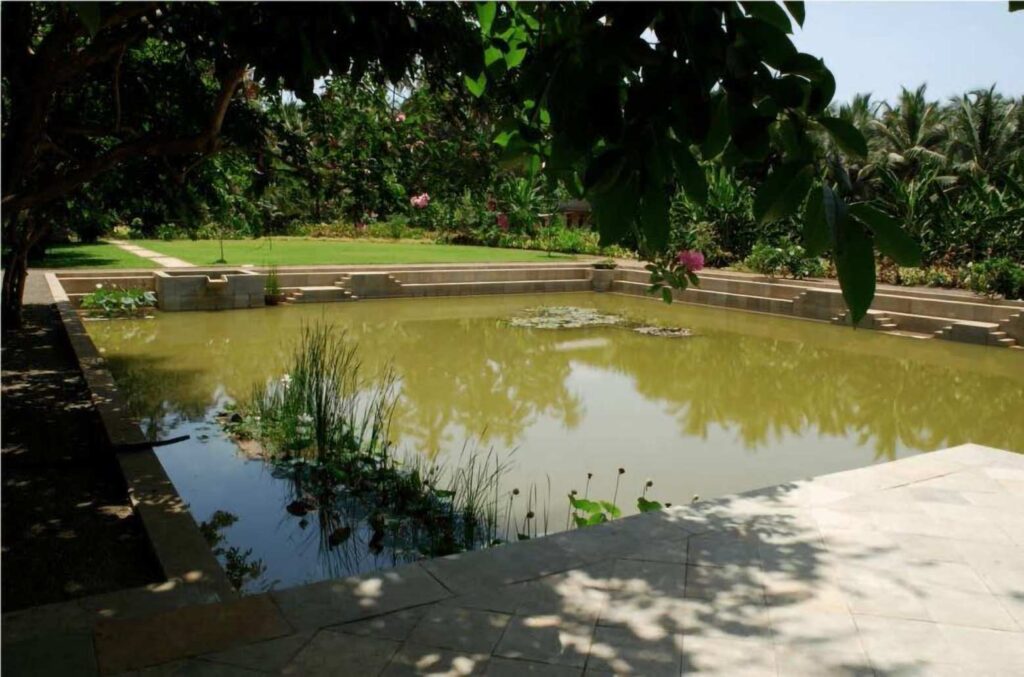The 1990s was a time when India had just become a liberalised economy; this liberalisation had enabled the success of several entrepreneurs and had allowed civil society to emerge as a patron. One of these patrons is Sunita Namjoshi, founder of textile business Synergy Lifestyles, and an early client of Mumbai-based SJK Architects, a firm which was also established during this time. A trailblazer herself, Sunita studied and worked in hotel management before switching to textiles. Sunita mentions that SJK Architects is the only architecture firm that she has worked with. The collaboration between Namjoshi and SJK Architects began in the mid-90s and the projects they have executed together span a range of typologies, including residences, factories, retail stores, and corporate offices.
The Founding Partner of SJK Architects, Shimul Javeri Kadri, recalls that the architectural sector at the time was very different. Coming back with a masters from the US, she found that there were very few practices doing work that would engage her. There were very few developers and private clientele had not really taken off. She eventually decided to start her own practice when a close friend approached her to do a laboratory. Her first real client was a government exporter who wanted his office done in Nariman Point, and called her up because he had heard that she had just come back from abroad. Interestingly, he hired her because the idea Shimul sketched was similar to a foreign architect. Shimul mentions that projects in their first 10 years came from clients who first gave tiny and then much larger projects, with Sunita being one such client.
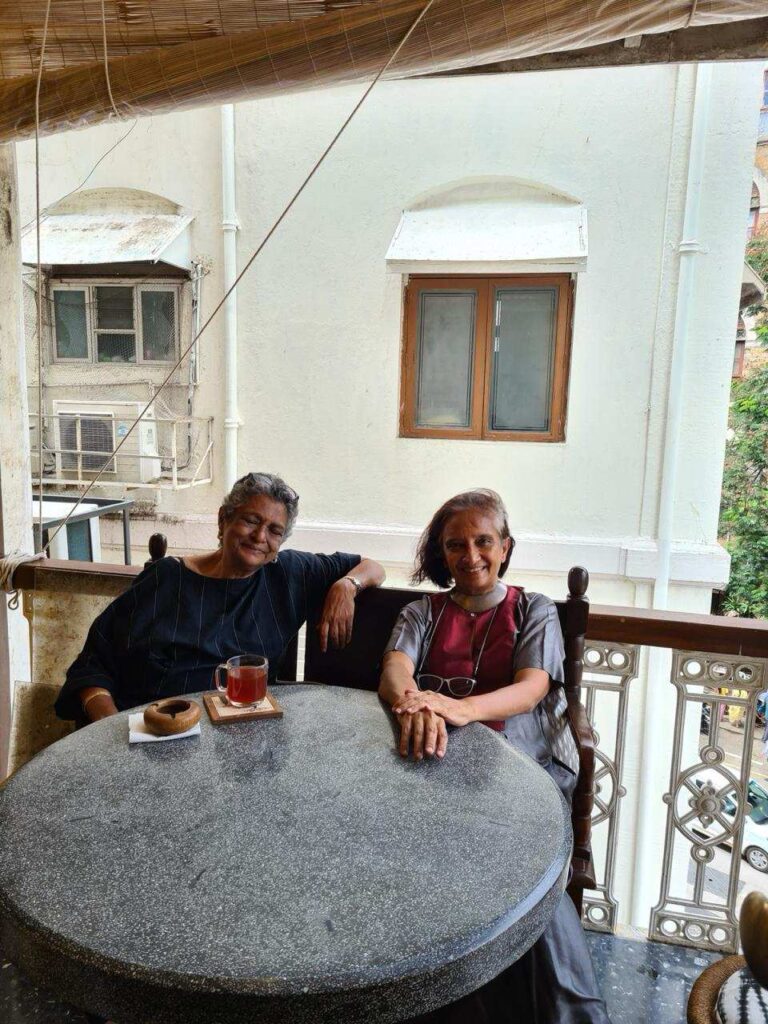
Both Shimul and Sunita emphasise the trust they have in each other and their shared values, about aspects of climate, wind factor, light, and a similar sense of aesthetics. The first project they did together was the Synergy Corporate Office in an industrial area, which they began work on in December 1996. Their initial interactions were around building in a textile mill area of Mumbai, industry, and materials. This corporate office also became a catalyst for two of their partners, Sarika Shetty and Vaishali Mangalvedhekar, to join the practice. Vaishali joined in 2000, after seeing the detailing of the staircase on a magazine cover. What attracted her to SJK Architects was the really beautiful contemporary detailing of the staircase and the use of different materials. Similarly, Sarika was attracted to the blue wall of Synergy Lifestyles that was featured on the cover of Indian Architect & Builder magazine. This corporate office was the beginning of many other successful collaborations between SJK Architects and Synergy Lifestyles.
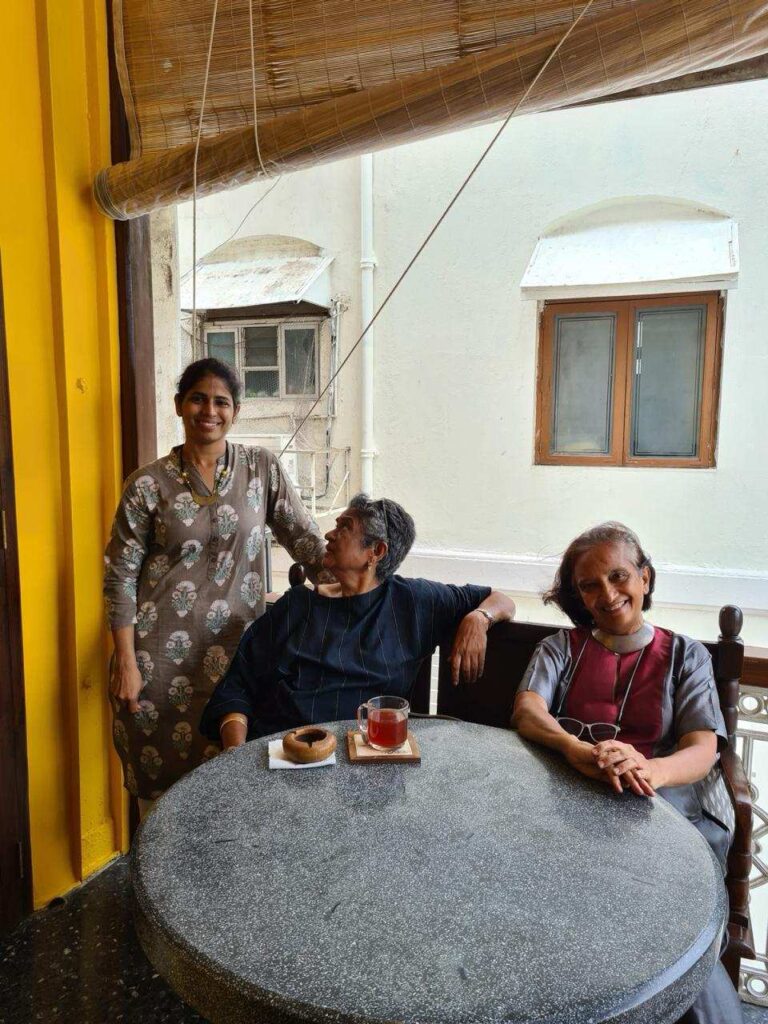

All four of them – Sunita, Shimul, Sarika, and Vaishali, emphasised how the Karur factory became a milestone for both their businesses. The factory, built in a small and conservative town of Tamil Nadu, was a first of its kind. It was the first factory that Synergy Lifestyles built (earlier they rented spaces and buildings) and was also foundational to the design approach of SJK Architects. Architecturally, they pushed the boundaries of working with climate, local materials, and local craftspeople, while developing a contemporary form that suits the function of a factory.
Sunita called this factory an eye-opener in terms of the open spaces, the natural light, good ventilation; with the opening of this factory, the productivity of the factory workers’ went up by 200%.
A range of projects happened during the period between 2003-2008. Two factories in Karur and Bangalore respectively, a retail store in Pune, and residences. The Bangalore factory was double in size when compared to the one in Karur, and the functions carried out in each differed too. While the checking of yarns and fabrics happened in Karur, the products got made and exported from the factory in Bangalore; this is why space planning was much more critical here. Sarika mentioned how the design of these factories were a big learning about not just architecture, but also humaneness and how one deals with people. Moving towards a better outcome in a space much farther from the main city, and retaining her people emphasises the trust Sunita and her people have in one another. The Bangalore factory really augmented her business as she was catering to the export world.
Sunita emphasised how projects like the Karur and Bangalore factories created a positive mindset in the eyes of the customer, about this being a great practice.
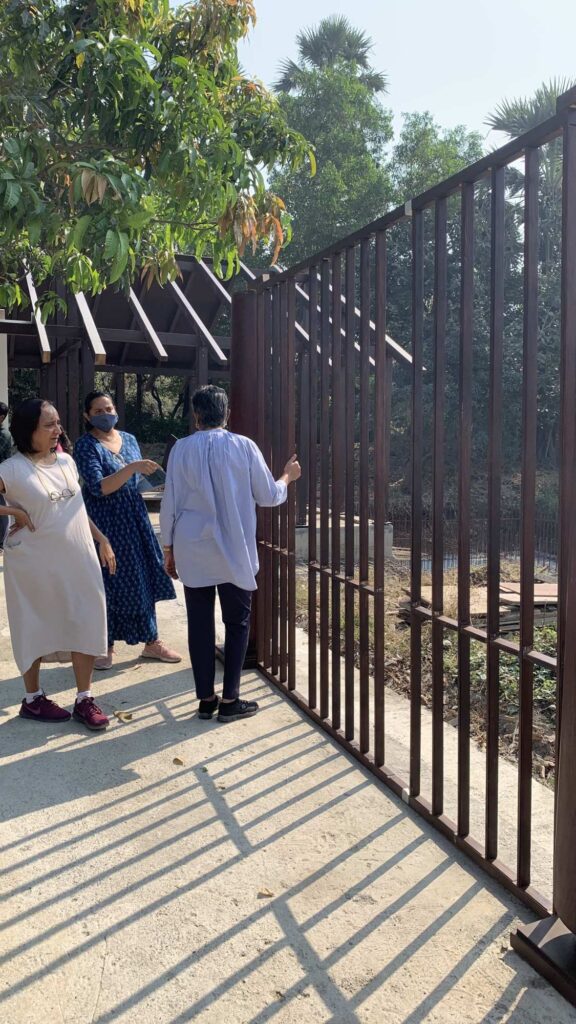
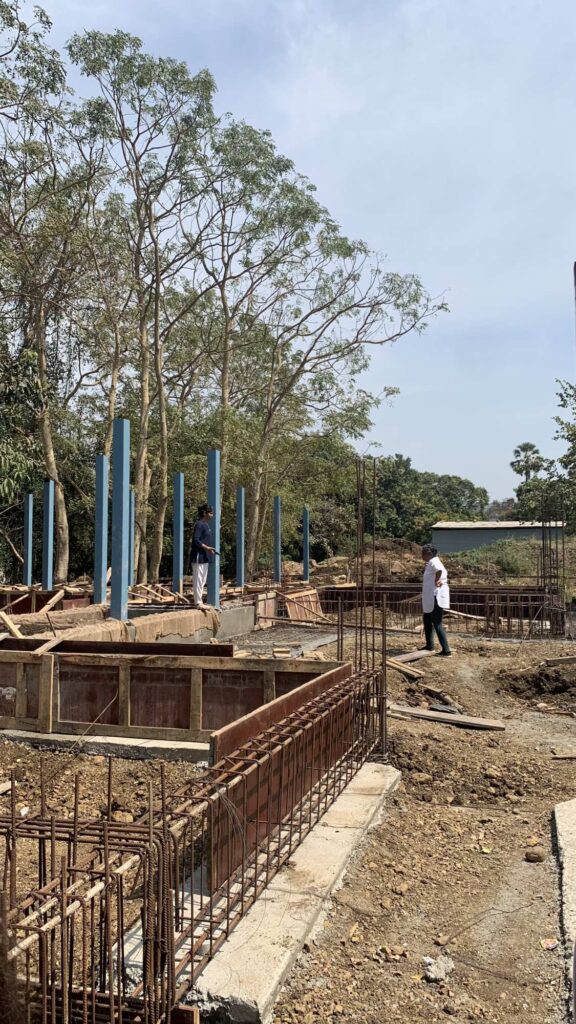

This aspect of thinking about public benefit is reflected through the design of her two residences in Alibaug as well. In 2007, for Sunita’s daughter’s wedding, SJK Architects designed a residence in a 3-acre land in the town. 1-acre of this land was inundated with water, which led them to roping in environmentalists and a water management expert to study the monsoons. Their water management exercise made the salty water sweet, which the villagers could access, thus changing the way the entire village worked. The latest project they are working on is another residence in Alibaug, Sunita’s retirement home. Here too, Sunita is developing a skill centre, which is a community space that can bring in the village women and impart skills of baking and cooking continental cuisines. This is to enable them to have better livelihoods as there is a demand for such skills in Alibaug. Architecturally, they are pushing a boundary by building a full timber house with dry walling system which is unheard of in Alibaug where it rains torrentially.
When asked about how they would brief their studio team on working with Sunita, Vaishali outlined five aspects. Recalling her experience of choosing a contractor for the Karur Factory as a young architect, Vaishali shared how they ended up choosing a lesser experienced contractor because of the way he had studied the tender and the fact that he came across as a really good human being. She further shared how Sunita chooses people on the basis of the qualities and values they bring to the table.
Deep love and respect for people, love for the visual and homemade, the sheer joy she took in stretching creativity, and ensuring that the basics are first covered, are the other qualities Vaishali mentioned she would share with her team.
Sunita also shares – “What has developed over time is a huge amount of trust. I have seen huge changes in approach, but the basics haven’t changed.” Shimul Javeri Kadri shares that Sunita understands very well the concept of patronage and where her money will give her value. This is further emphasised by Sunita Namjoshi also winning the Best Patron Award in 2019 by Elle Decor magazine. The collaboration between SJK Architects and Sunita Namjoshi underscores a journey of mutual trust, shared values, and continuous growth. Their partnership reflects the power of mindful patronage in fostering conscious architecture that positively transforms communities and environments.

